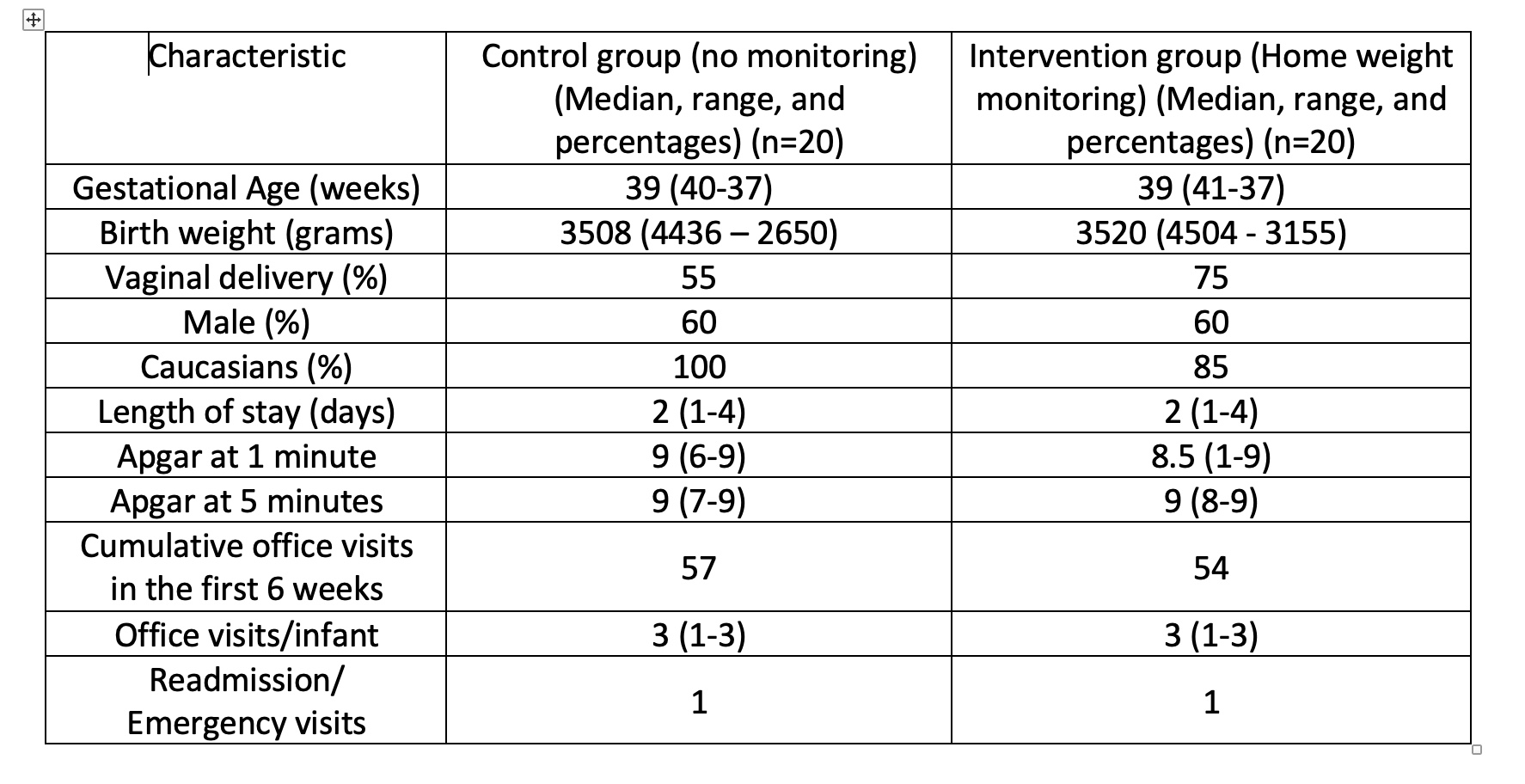Telemedicine/EHR/Medical Informatics
Telemedicine/EHR/Medical Informatics 3
646 - Impact of remote home weight monitoring on the number of office visits in the first six weeks of life in newborn infants. A randomized Controlled Trial.
Publication Number: 646.456

Nikita Akkala, M.S.
Medical Student
Cleveland Clinic Children's
Beachwood, Ohio, United States
Presenting Author(s)
Background:
The American Academy of Pediatrics recommends two well-baby office visits for normal newborns in the first 6 weeks of life. But pediatricians often recommend additional follow-up weight-check visits when inadequate weight gain is suspected. These extra office visits cost new parents added time and expense and may increase infectious exposures to newborn infants while also diverting clinic resources away from other patients in need. Previous studies have shown greater maternal satisfaction with effective telemonitoring of weight at home.
Objective: To reduce the number of unnecessary office visits in the first six weeks of life uncomplicated infants born at 37-week gestation or greater, discharged from the newborn nursery, remotely, using patient portal and electronic medical record by the primary care provider (PCP).
Design/Methods:
In an Institutional Review Board approved and funded prospective Randomized Controlled Trial (RCT) (ClinicalTrials.gov identifier: NCT04985227), using block randomization, newborn infants, with parental consent, were assigned to either Control group, where no home telemonitoring of weight was done or Intervention group, where the parents were provided with a weighing scale and were expected to enter the infant’s weight into the patient-portal application on their smart devices three time/week for the first 6 weeks to allow remote monitoring by the infant’s PCP and to inform the need for additional in-office weight-check visits.
Results: Twenty infants were included in each group. Two infants in the intervention group were lost to follow-up but were included in the analyses (Intent to treat). No significant demographic differences were observed between the groups (Table 1). The collective office visits for the control group were three more than the intervention group (57 vs 54, p=0.7). Although in week one, the intervention group infants collectively had 3 more visits (30 vs 27), the number of office visits in the intervention group was 27% less in week two, 22% less in week 3 and 25% less in week 4-6, compared to the control group. Overall, the collective number of office visits in the intervention group decreased by 25% after the first week and 23% after the second week (Table 2). The inconsistent office visits in the first week may be attributed to the delayed first weight data uploaded by parents (median=5 days of life).
Conclusion(s):
In an RCT, a remote home weight monitoring program for normal newborns in the first six weeks reduced the number of office visits by a quarter after the first week of life. 

